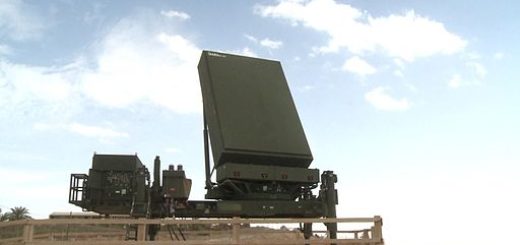Indra Introduces Digital Self-Protection Systems for Aircraft to Enhance Missile Defense Response
{loadposition bannertop}
{loadposition sidebarpub}
According to a statement dated August 4, 2025, published by Indra in Spain, the company announced the launch of a new generation of fully digital self-protection systems designed for combat aircraft, transport aircraft, and helicopters. This technology, which will undergo flight testing shortly, is intended to reduce the time required to detect a missile attack and to enable a faster response to neutralize the threat. The first units, already produced following the design phase, will be delivered this year for integration on various platforms.Follow Army Recognition on Google News at this link
The objective is to maintain operational capability in environments where threats, whether from technologically advanced forces or asymmetric systems such as MANPADS, are becoming more numerous and complex.(Picture source: Indra)
This development positions the company among the European entities working in this field, at a time when many other actors remain focused on hybrid solutions combining analog and digital technologies. Transitioning fully to digital makes it possible to scan the entire relevant radar spectrum simultaneously, allowing for faster detection and providing additional time to activate countermeasures. The objective is to maintain operational capability in environments where threats, whether from technologically advanced forces or asymmetric systems such as MANPADS, are becoming more numerous and complex.
The new system developed by Indra consists of several modular components. The ALR-400 Full Digital radar warning receiver detects radar-guided missiles or hostile defense radars. The InWarner system detects laser-guided missiles, while the InShield DIRCM (Directed Infrared Countermeasure) system protects against infrared-guided missiles launched from the ground or other aircraft. The suite can also integrate commonly used expendable countermeasures, including chaff and flare dispenser systems. Chaff disperses fine reflective fibers to disrupt radiofrequency-guided missiles, while flares divert infrared-guided missiles.
The modular design allows the protection suite to be tailored to the specific requirements of each armed force, whether for high-intensity missions or operations in medium-risk areas. Indra has previously equipped F-18 fighter aircraft, A400M and C295 transport aircraft, and NH90 and Tiger helicopters. The company is also involved in the development of the Eurofighter’s self-protection system. With this evolution, these platforms are intended to remain operational against increasingly complex threats in the coming decades.
At the same time, Indra is engaged in several European research and development programs focused on integrating advanced technologies into military aviation. These include multifunction systems combining radar, communications, and electronic warfare in a single device (CROWN and SCEPTER projects), electronic attack capabilities (REACT and REACT II), and next-generation self-protection systems for aircraft and helicopters incorporating artificial intelligence (CARMENTA and CARMENTA FP).

{loadposition bannertop}
{loadposition sidebarpub}
According to a statement dated August 4, 2025, published by Indra in Spain, the company announced the launch of a new generation of fully digital self-protection systems designed for combat aircraft, transport aircraft, and helicopters. This technology, which will undergo flight testing shortly, is intended to reduce the time required to detect a missile attack and to enable a faster response to neutralize the threat. The first units, already produced following the design phase, will be delivered this year for integration on various platforms.
Follow Army Recognition on Google News at this link
The objective is to maintain operational capability in environments where threats, whether from technologically advanced forces or asymmetric systems such as MANPADS, are becoming more numerous and complex.(Picture source: Indra)
This development positions the company among the European entities working in this field, at a time when many other actors remain focused on hybrid solutions combining analog and digital technologies. Transitioning fully to digital makes it possible to scan the entire relevant radar spectrum simultaneously, allowing for faster detection and providing additional time to activate countermeasures.
The objective is to maintain operational capability in environments where threats, whether from technologically advanced forces or asymmetric systems such as MANPADS, are becoming more numerous and complex.
The new system developed by Indra consists of several modular components. The ALR-400 Full Digital radar warning receiver detects radar-guided missiles or hostile defense radars. The InWarner system detects laser-guided missiles, while the InShield DIRCM (Directed Infrared Countermeasure) system protects against infrared-guided missiles launched from the ground or other aircraft.
The suite can also integrate commonly used expendable countermeasures, including chaff and flare dispenser systems. Chaff disperses fine reflective fibers to disrupt radiofrequency-guided missiles, while flares divert infrared-guided missiles.
The modular design allows the protection suite to be tailored to the specific requirements of each armed force, whether for high-intensity missions or operations in medium-risk areas. Indra has previously equipped F-18 fighter aircraft, A400M and C295 transport aircraft, and NH90 and Tiger helicopters. The company is also involved in the development of the Eurofighter’s self-protection system. With this evolution, these platforms are intended to remain operational against increasingly complex threats in the coming decades.
At the same time, Indra is engaged in several European research and development programs focused on integrating advanced technologies into military aviation. These include multifunction systems combining radar, communications, and electronic warfare in a single device (CROWN and SCEPTER projects), electronic attack capabilities (REACT and REACT II), and next-generation self-protection systems for aircraft and helicopters incorporating artificial intelligence (CARMENTA and CARMENTA FP).






